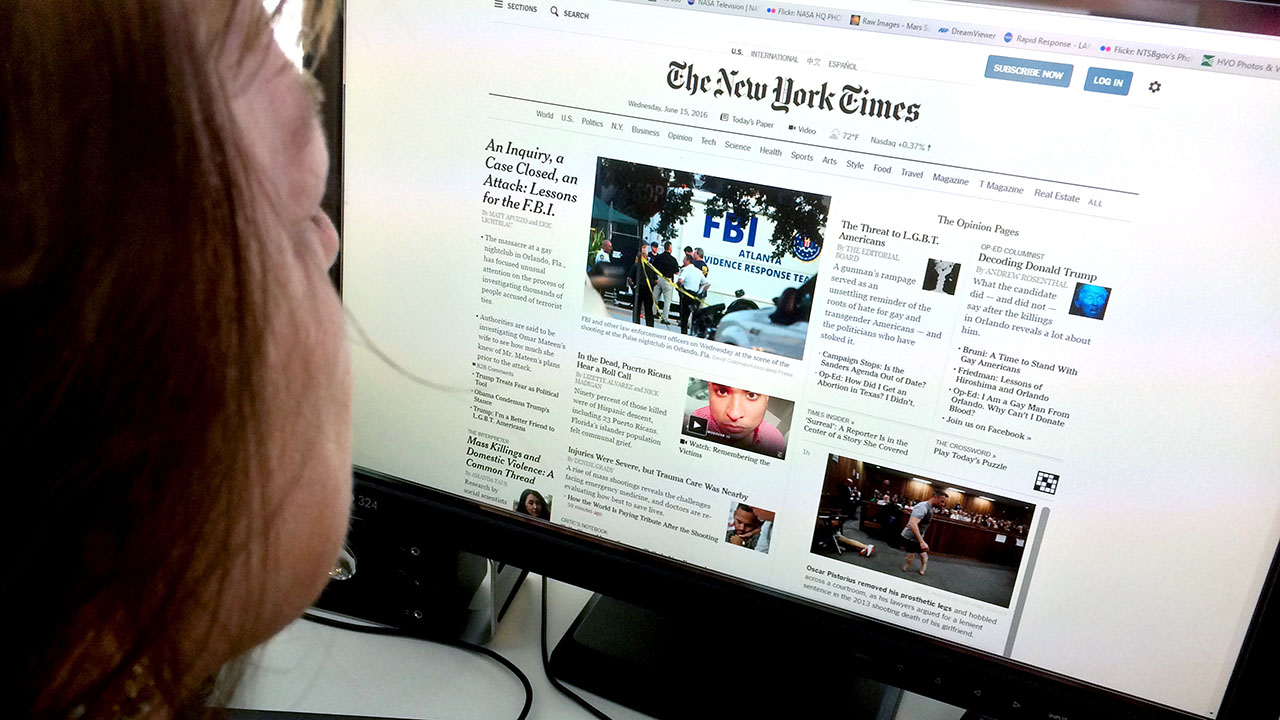Damaging Global Headings Covered by DW News Today
Damaging Global Headings Covered by DW News Today
Blog Article
The Advancement of Journalism in the Age of Information Online
In the quickly changing landscape of journalism, the electronic age has introduced a brand-new age where the immediacy of online news reshapes both its production and consumption. As digital systems multiply, they enhance interactivity and expand the reach of journalism, yet concurrently test traditional norms with the speedy spread of details and misinformation alike. The surge of resident journalists and independent voices further complicates the narrative, adding to a lively yet perilous media ecological community. As we browse these complexities, one should question the future of journalistic integrity and how it can be guarded amidst these transformative changes.

Increase of Digital News Operatings Systems
The rise of electronic information platforms has actually basically transformed the landscape of journalism, marking a change from typical print media to dynamic, online spaces. This evolution was propelled by advancements in technology and the enhancing accessibility of the internet, which enabled information to be distributed quickly and extensively. Unlike their print counterparts, digital systems can quickly upgrade content, supplying real-time news coverage and evaluation that attract the contemporary visitor's demand for immediacy and relevance.
Digital platforms have also broadened the range of journalism, making it possible for a diversification of perspectives and voices. With lower obstacles to access, independent journalists and smaller sized information companies can reach international audiences, challenging the monopoly as soon as held by established media corporations. This democratization of news has actually enhanced the general public discourse, supplying differed stories and providing to particular niche passions that were formerly underserved.
Furthermore, the assimilation of multimedia aspects such as video clip, audio, and interactive graphics enhances storytelling, making news a lot more engaging and obtainable (dw news). This multimedia come close to not just draws in a more comprehensive audience but additionally aids in the comprehension of complicated tales. Fundamentally, electronic platforms have actually redefined journalism, cultivating development and adaptability in an ever-evolving media environment

Influence of Social Media Site
Social media systems have even more revolutionized journalism by altering how information is eaten and shared. In addition, social media has actually broadened audiences, granting reporters accessibility to worldwide viewership beyond geographical constraints.

The interactive nature of social networks fosters engagement, permitting target markets to take part in discussions, share opinions, and add to news narratives. This communication boosts the dynamic between reporters and their target markets, promoting a more participatory kind of journalism. Nonetheless, this likewise places immense stress on reporters to create web content that reverberates with audiences, typically focusing on sensationalism to capture interest.
Moreover, social networks systems have actually become crucial tools for reporters to resource tales, assess popular opinion, and network with industry peers. By keeping an eye on trending topics and user-generated web content, journalists can reveal stories that might otherwise be overlooked. Yet, the dependence on social media sites additionally demands an important examination of sources to make certain the trustworthiness of details shared. In this progressing landscape, flexibility continues to be crucial for reporters to thrive.
Difficulties of False Information
Among the digital revolution of journalism, one substantial difficulty is Full Article the pervasive spread of misinformation. In an era where information is plentiful and quickly accessible, differentiating in between credible information and fabricated web content has become progressively challenging. The sheer quantity of info disseminated throughout various on-line platforms frequently blurs the line in between truth and fiction, posturing a significant risk to the integrity of journalism.
Misinformation can spread quickly with social media, where formulas prioritize interaction over accuracy, inadvertently enhancing incorrect stories (dw news). This not just threatens public rely on media organizations yet also promotes an environment where deceptive content can affect public viewpoint and decision-making procedures. The difficulty for reporters is twofold: to disprove fallacies efficiently and to copyright extensive standards of fact-checking and confirmation
More complicating this concern is the presence of deepfakes and advanced disinformation campaigns that leverage advanced modern technologies to create deceptive web content indistinguishable from legitimate reporting. As these innovations develop, so need to the devices and approaches used by reporters to combat them. Addressing false information needs cooperation between media companies, innovation business, and policymakers to develop detailed strategies that guard the credibility of info in the electronic age.
Duty of Citizen Reporters
Browsing the landscape of false information highlights the transformative effect of resident reporters within the digital realm. As conventional media electrical outlets grapple with the sheer speed and quantity of news circulation online, person journalists-- normal individuals equipped with mobile phones and access to social networks-- are playing an increasingly crucial function. These grassroots factors have actually ended up being instrumental in covering occasions promptly, typically providing real-time updates from the ground prior to mainstream media can respond.
Person reporters have democratized information coverage, intensifying voices that might or else continue to be unheard. By leveraging systems like Twitter, Facebook, and Instagram, they supply varied viewpoints that test the stories often pushed by established media.
Nevertheless, citizen journalism is reshaping the media landscape, engaging typical electrical outlets to adjust by incorporating user-generated material into their reporting. great site By cultivating area involvement and motivating participatory journalism, these digital storytellers add to an extra vibrant and inclusive information environment. As resident journalists proceed to progress, their function fit public discussion stays a crucial part of contemporary journalism.

Future of Journalistic Stability
The expansion of visit our website electronic platforms has equalized details circulation, enabling a larger variety of voices to contribute to the news landscape. This has actually additionally led to the spread of false information and the disintegration of trust fund in media.
The increase of fabricated intelligence and algorithm-driven content curation additionally complicates the landscape. While AI can improve coverage by assessing huge datasets and determining patterns, it additionally poses threats of prejudice and adjustment. Journalists have to for that reason remain vigilant, making sure that modern technology offers as a tool for fact as opposed to distortion.
Furthermore, the financial pressures on standard media electrical outlets require ingenious service versions to maintain quality journalism. Subscription-based versions, nonprofit funding, and collaborations with technology companies are emerging as possible services. Yet, they should be gone after without jeopardizing content self-reliance.
Eventually, the future of journalistic honesty depends upon the commitment of journalists and media companies to copyright openness, liability, and an unfaltering dedication to fact, in the middle of a swiftly altering electronic globe.
Final Thought
The evolution of journalism in the electronic age presents both opportunities and challenges. The rise of electronic information systems and social media sites has equalized information dissemination, equipping a varied range of voices, consisting of person journalists. However, these improvements necessitate cautious initiatives to battle false information and copyright journalistic integrity. The future of journalism depends upon the ability to adapt ingenious business designs that maintain top quality coverage while preserving the trustworthiness and trust important for informed public discussion.
The rise of electronic information systems has essentially transformed the landscape of journalism, marking a shift from typical print media to dynamic, online areas. With lower barriers to access, independent journalists and smaller news organizations can get to international audiences, testing the monopoly once held by developed media corporations.Social media platforms have actually additionally changed journalism by modifying how news is taken in and shared. As typical media electrical outlets grapple with the sheer speed and volume of information circulation online, person reporters-- common people armed with smartphones and access to social media-- are playing a significantly pivotal duty. The surge of electronic information platforms and social media has democratized information circulation, equipping a diverse range of voices, including citizen reporters.
Report this page